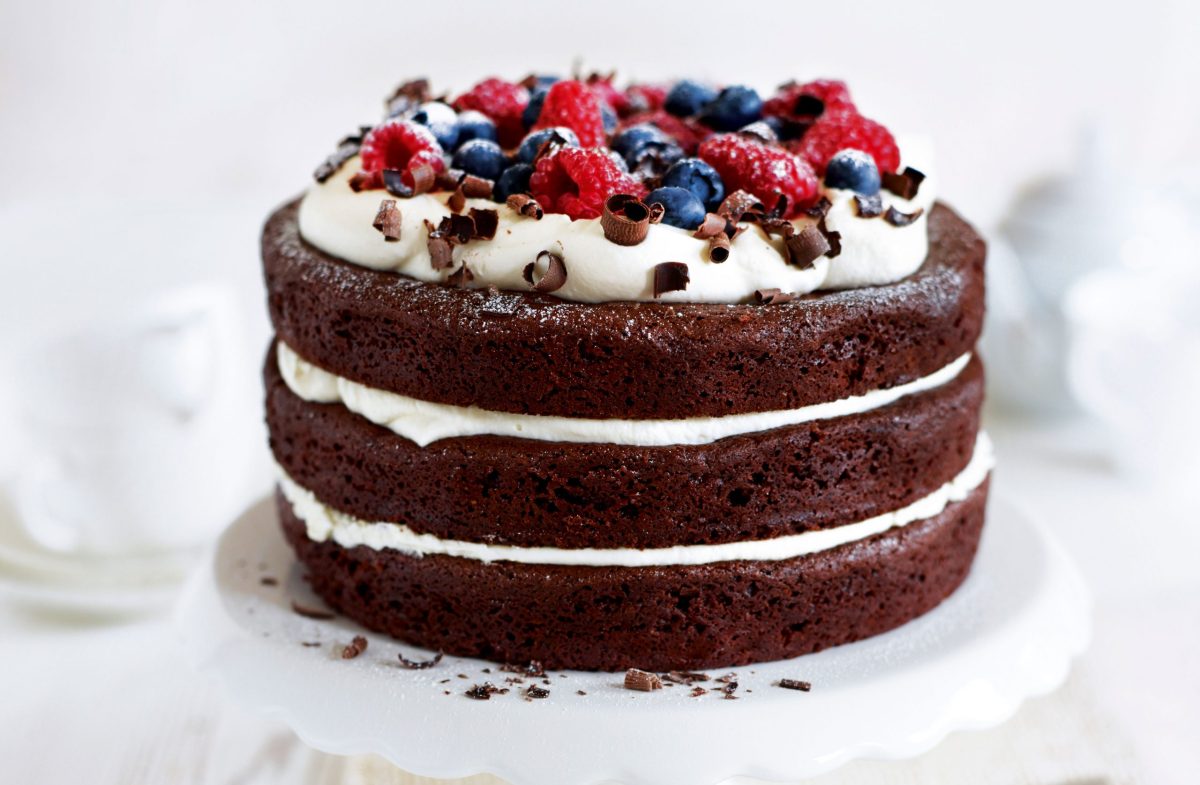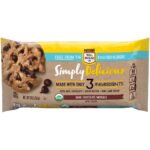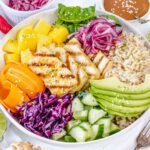Imagine a world where delicious, allergy-friendly cakes grace every celebration, from intimate birthdays to grand weddings. This isn’t a dream; it’s the reality unlocked by mastering the art of egg-free and nut-free baking. Dive into a collection of recipes designed to delight even the most discerning palates, showcasing the versatility and surprising lightness achievable without eggs or nuts. Prepare to be amazed by the textures, the flavors, and the sheer elegance of these meticulously crafted cakes, each a testament to the power of creative baking.
This guide provides not just recipes, but a comprehensive exploration of ingredient substitutions, baking techniques, and stunning decoration ideas. Learn how to achieve a perfectly light and fluffy texture, troubleshoot common problems, and transform simple cakes into show-stopping masterpieces. Whether you’re a seasoned baker or a novice enthusiast, you’ll find the knowledge and inspiration to create unforgettable egg-free and nut-free cakes for any occasion.
Baking Techniques and Troubleshooting

Creating light and fluffy egg-free and nut-free cakes requires careful attention to technique. The absence of eggs, which provide structure and leavening, and nuts, which contribute moisture and richness, necessitates alternative methods to achieve a desirable outcome. This section details crucial steps and solutions to common problems.
Achieving a Light and Fluffy Texture
The key to a light and airy egg-free and nut-free cake lies in proper ingredient selection and mixing techniques. Using a combination of leavening agents, such as baking powder and baking soda, is essential. Baking powder provides immediate lift, while baking soda reacts with an acidic ingredient (like lemon juice or vinegar) for additional leavening. The correct balance is crucial; too much can result in a bitter taste and a coarse texture. Furthermore, incorporating air into the batter is vital. This can be achieved through vigorous whisking of dry ingredients and gentle folding of wet ingredients. Overmixing should be avoided, as it can develop gluten, leading to a tough cake. Using a light and fluffy oil, such as vegetable oil or canola oil, contributes to a tender crumb. Finally, selecting a recipe that utilizes starch-based binders, such as cornstarch or potato starch, helps create a more cohesive structure.
Dryness and Crumbliness in Egg-Free and Nut-Free Cakes
Dryness and crumbliness are common challenges in egg-free and nut-free baking. Dryness often stems from insufficient moisture in the recipe. Adding extra oil or applesauce can increase moisture content, while using full-fat milk or yogurt adds richness and creaminess. Crumbliness can be caused by overbaking or an imbalance of ingredients. To remedy crumbliness, ensure the cake is baked to the correct internal temperature, checking with a toothpick inserted into the center. A toothpick that comes out clean indicates doneness. Adjusting the baking powder to baking soda ratio, or vice-versa, may also improve texture. For example, if the cake is too crumbly, reducing the baking powder slightly might be beneficial. If the cake is too dense, a slight increase in baking soda (in conjunction with an acidic ingredient) may help.
Layering and Frosting Techniques
Proper layering and frosting are crucial for a professional-looking cake. Begin by ensuring your cake layers are completely cool before frosting. This prevents the frosting from melting. Once cooled, level the tops of the layers using a serrated knife to create a flat, even surface. Place one layer on a cake board or serving plate. Spread a generous layer of frosting evenly over the top. Carefully place the next layer on top and repeat the frosting process. For the final layer, frost the entire cake, ensuring a smooth, even coating. A bench scraper can be used to achieve a perfectly smooth finish by gently scraping off any excess frosting. Visualize this process: Imagine a pristine white cake, its layers perfectly aligned, each meticulously frosted. The frosting is smooth, without a single imperfection, gleaming under the light. A final touch, such as fresh berries or chocolate shavings, can add a visually appealing and delicious finishing touch. The overall effect is a masterpiece of baking artistry.
Decorating and Presentation Ideas
Transforming a simple egg-free and nut-free cake into a culinary masterpiece involves thoughtful decorating and presentation. The right techniques and garnishes can elevate your cake from a delicious treat to a stunning centerpiece, perfect for any occasion. Careful consideration of color palettes, textures, and overall design will create a truly memorable presentation.
The possibilities for decorating egg-free and nut-free cakes are as diverse as the occasions they celebrate. From simple elegance to playful whimsy, the right approach will complement the flavor and the event. The key is to choose techniques and decorations that align with the overall aesthetic you envision.
Frosting Techniques
A smooth, flawlessly applied frosting forms the perfect base for further decorations. Consider using a classic buttercream frosting, easily adaptable to egg-free and nut-free recipes. Achieve a perfectly smooth finish by using a bench scraper, creating a clean, professional look. For a more rustic, textured appearance, consider a crumb coat followed by a slightly less smooth application of frosting, allowing some of the cake’s texture to show through. A contrasting colored frosting piped in swirls or rosettes adds visual interest and dimension.
Piping Designs
Piping intricate designs onto the cake adds a touch of sophistication. Star tips create classic rosettes, while leaf tips allow for elegant floral accents. A simple border around the base of the cake can elevate its overall presentation. Practice your piping skills on parchment paper before applying them to the cake to ensure clean, consistent lines. Consider using contrasting colors for the piping to highlight the design and create visual appeal.
Fruit Arrangements
Fresh fruit adds a vibrant pop of color and a refreshing element to any cake. Arrange berries in a circular pattern around the edge, or create a more artistic arrangement with slices of various fruits, such as kiwi, mango, and strawberries. For a more formal occasion, consider using carefully selected fruits in a symmetrical pattern. The natural sweetness and juiciness of the fruit complement the cake beautifully and provide a delightful textural contrast.
Garnish and Decoration Options
A selection of suitable garnishes and decorations will complete the look of your cake.
The following list highlights some suitable options for egg-free and nut-free cakes:
- Edible flowers: Delicate pansies, violets, or roses add a touch of elegance and natural beauty.
- Sprinkles: A rainbow of sprinkles adds a playful touch, perfect for birthdays or children’s parties.
- Chocolate shavings: Dark, milk, or white chocolate shavings provide a sophisticated touch and a delightful chocolate flavor.
- Candied fruit: Candied citrus peels or cherries offer a sweet and visually appealing accent.
- Cocoa powder dusting: A light dusting of cocoa powder adds a touch of sophistication and enhances the chocolate flavor.
Elegantly Decorated Cake for a Formal Event
Imagine a three-tiered egg-free and nut-free cake, each layer a different shade of ivory, ranging from a pale cream to a deeper, almost beige hue. The layers are separated by delicate bands of white chocolate ganache, creating a subtle contrast. Each tier is adorned with meticulously piped rosettes of a rich, dark chocolate buttercream frosting, arranged in a symmetrical pattern. Delicate, edible silver leaf is sparingly applied, adding a touch of understated luxury. Fresh raspberries and blueberries are artfully scattered across the top tier, their deep red and blue hues complementing the ivory and chocolate tones. The overall effect is one of understated elegance and sophistication, perfect for a formal wedding or anniversary celebration. The textures – the smooth ganache, the velvety buttercream, and the soft fruit – combine to create a visually and texturally rich experience.
From the initial mixing of ingredients to the final flourish of a delicate frosting swirl, creating egg-free and nut-free cakes is a journey of culinary exploration. This guide has equipped you with the tools and knowledge to confidently navigate this exciting path. Remember, the key lies in understanding ingredient interactions and mastering a few fundamental techniques. With practice and a touch of creativity, you’ll be crafting stunning, allergy-friendly cakes that not only taste incredible but also tell a story of thoughtful preparation and delightful celebration. So, gather your ingredients, embrace the process, and let your culinary creativity soar!
Frequently Asked Questions
Can I freeze egg-free and nut-free cakes?
Yes, most egg-free and nut-free cakes freeze well. Wrap them tightly in plastic wrap and then foil, and freeze for up to 3 months. Thaw overnight in the refrigerator.
What’s the best way to store leftover cake?
Store leftover cake in an airtight container at room temperature for up to 3 days, or in the refrigerator for up to a week.
Can I use other types of flour besides those mentioned?
While the guide focuses on specific flours, experimentation is encouraged! However, be aware that different flours will affect the texture and moisture of the cake. You may need to adjust liquid amounts accordingly.
How can I make the cake more moist?
Adding a bit of extra oil or applesauce can increase moisture. Using a simple syrup to soak the cake layers before frosting also helps.


